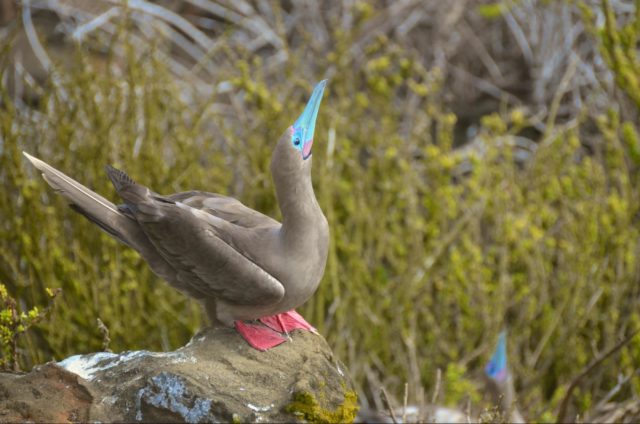
Deciding where to go in the Galapagos Islands is hard – the Galapagos Archipelago is huge. A network of nearly 20 major and minor islands, each with its own unique ecosystems, the Islands are far too large to fully experience on any single trip. We have chosen our itineraries with this in mind – each trip is built to explore and experience a smaller region more fully.
We offer 4 and 5 day cruise packages through the North, East, South, and Western Galapagos Islands. Each package highlights a different region within the archipelago, but choosing between them can feel a little overwhelming – here is a bit of information to consider as you’re planning.
North Galapagos Cruises
The northern islands offer some of the best birding in the Galapagos
This itinerary is the only option to get you to Genovesa Island, arguably the best bird-watching spot in the Galapagos Islands. Home to Prince Philip’s Steps, a plateau that serves as the home and annual nesting spot for many of the Galapagos’ most beautiful species of birds. Over 200,000 red-footed boobies inhabit the island, in addition to storm-petrels, short-eared owls, and many others. Keep your camera handy as you pass through this birder’s paradise.
You will also visit another of Genovesa Island’s most remarkable features: Darwin Bay. This a fantastic spot for snorkeling or swimming from the pristine white coral beach.
You will snorkel right over a cleaning station for the hammerhead sharks. The massive predators swim right into the shallows of Darwin Bay to be cleaned by the local fish which eat dead skin cells, parasites, and bacteria off the shark. It is rare to find such an accessible and comfortable place to observe this incredible behavior.
This cruise includes time on Santa Cruz to visit the highland tortoise sanctuaries, as well as the sea turtle nesting sites on Bachas Beach.
East Galapagos Cruises
Best for hiking volcanic features, birds, sea lions.
The eastern Galapagos Islands are home to the largest colonies of frigate birds and sea lions found anywhere in the region, in addition to some of the most stunning volcanic geography. The beautiful landscapes and abundant wildlife make the eastern Galapagos an excellent option for a shorter cruise itinerary.
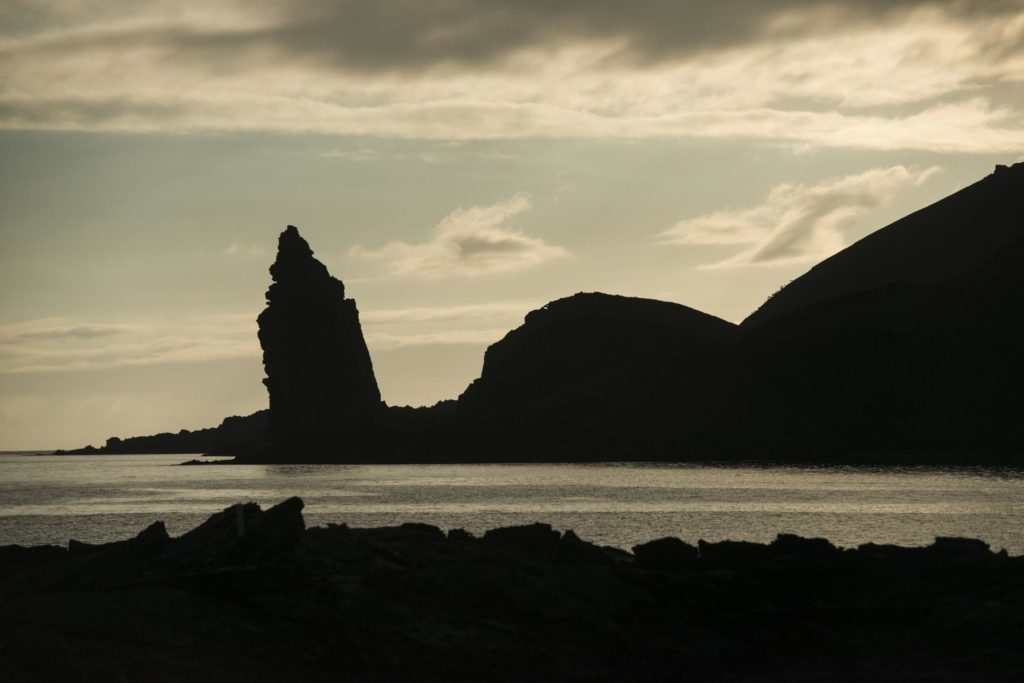
Bartolome Island is your first stop on this itinerary, home to one of the most distinctive landmarks of the Galapagos Islands – the Pinnacle Rock. Along the northern beach you will find a common nesting area for green sea turtles (used from January – March), and beautiful swimming and snorkeling opportunities with Galapagos Penguins, sea lions, rays, and beautiful colorful fish.
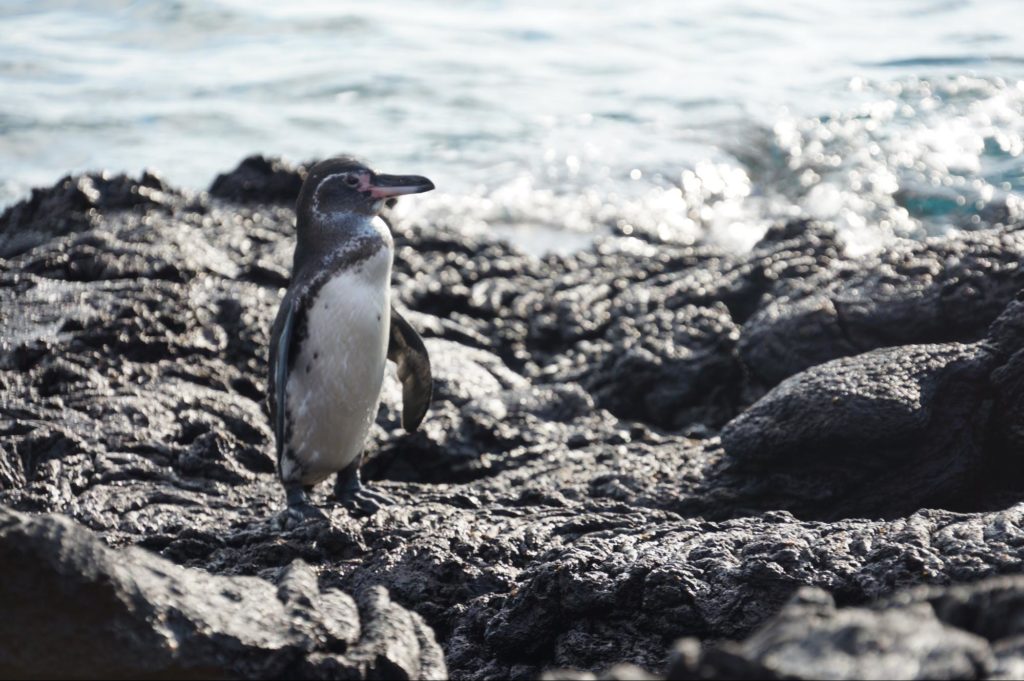
Your next stop is North Seymour Island, an excellent spot for both hiking and snorkeling. A short hike will pass through nesting areas for all three species of boobies, as well as a large colony of frigate birds and land iguanas – perfect subjects for a nature photographer. For those looking to play in the water, the coast of North Seymour Island has 3 wonderful snorkeling and kayaking sites – clear waters and good opportunities to observe sea lions, large schools of fishes, some sharks, rays, and sea turtles.
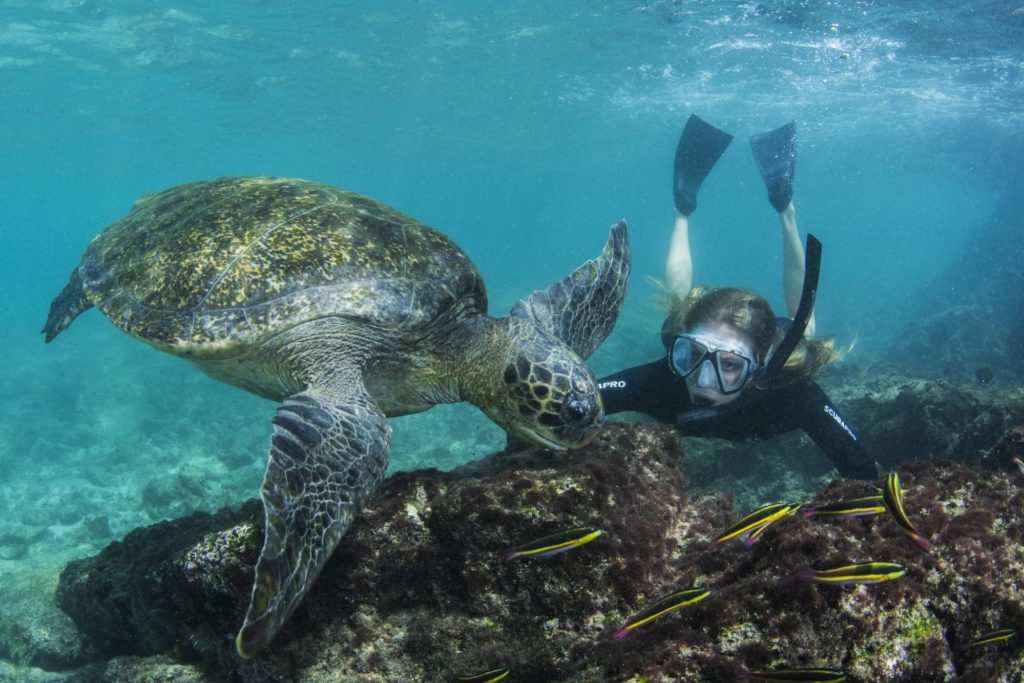
South Galapagos Cruises
Great Snorkeling and Diving Options
The Southern Galapagos Islands provide some of the best opportunities for snorkeling and diving in the Islands.
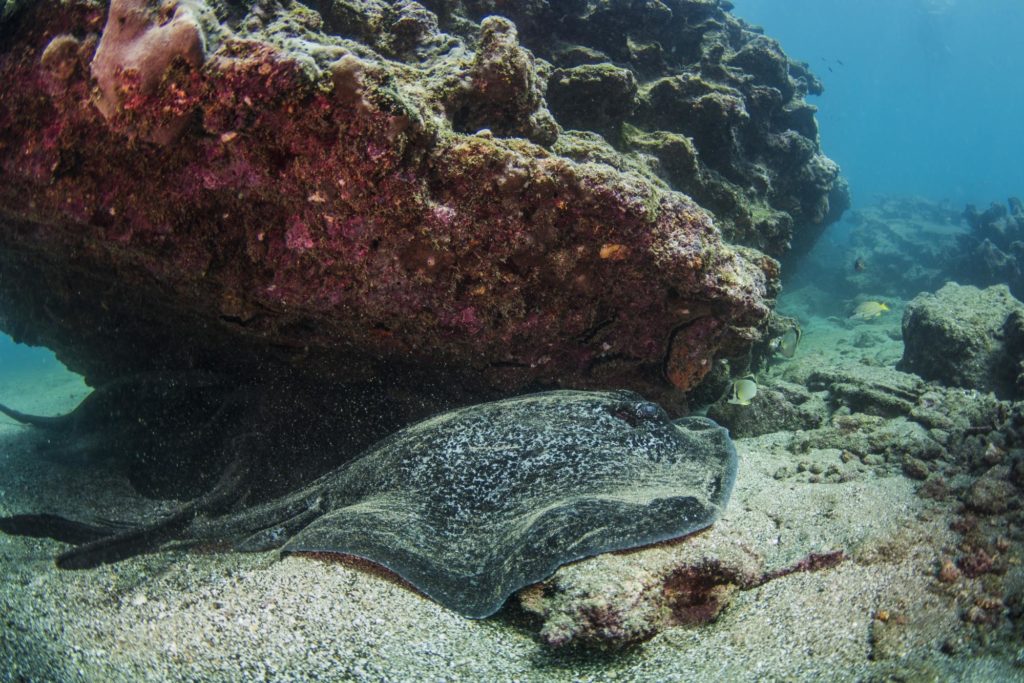
Passing by Florena Island you have the opportunity to snorkel in the Devil’s Crown, a partially eroded volcanic crater with a few rocky spikes protruding above the water in the shape of a crown. Inside you will discover an underwater oasis of pristine and vibrant coral reefs and the marine species that are attracted to them. Colorful coral fish, sea lions, eels, white-tipped sharks, rays, sea turtles, and many others all live or hunt in the Devil’s Crown regularly. Above water, the remains of the volcano provide an ideal home for seabirds, including boobies, frigate birds, pelicans, and others.
This itinerary is also the only option to visit Española Island, in the far southeastern Galapagos. This is a conservation marvel, with two of the most dramatic conservation successes in the Galapagos occurring here: the Española giant tortoise and Waved Albatross. Each year the entire world’s population of Waved Albatrosses return to Española to nest – more than 50,000 birds return to the island each year to nest. (nesting season goes from April to December). These birds are critically endangered and the conservation efforts in the Galapagos are key to rebuilding a sustainable population, as was done with the Española giant tortoise which went from only 14 adults in the 1960s to more than 2000 today.
West Galapagos Cruises
Snorkel with Penguins & Marine Iguanas
The Western Galapagos itinerary focuses a lot of its time exploring Isabella Island – giving you the best opportunity to experience the largest of the Galapagos Islands, and one of the most vibrant.
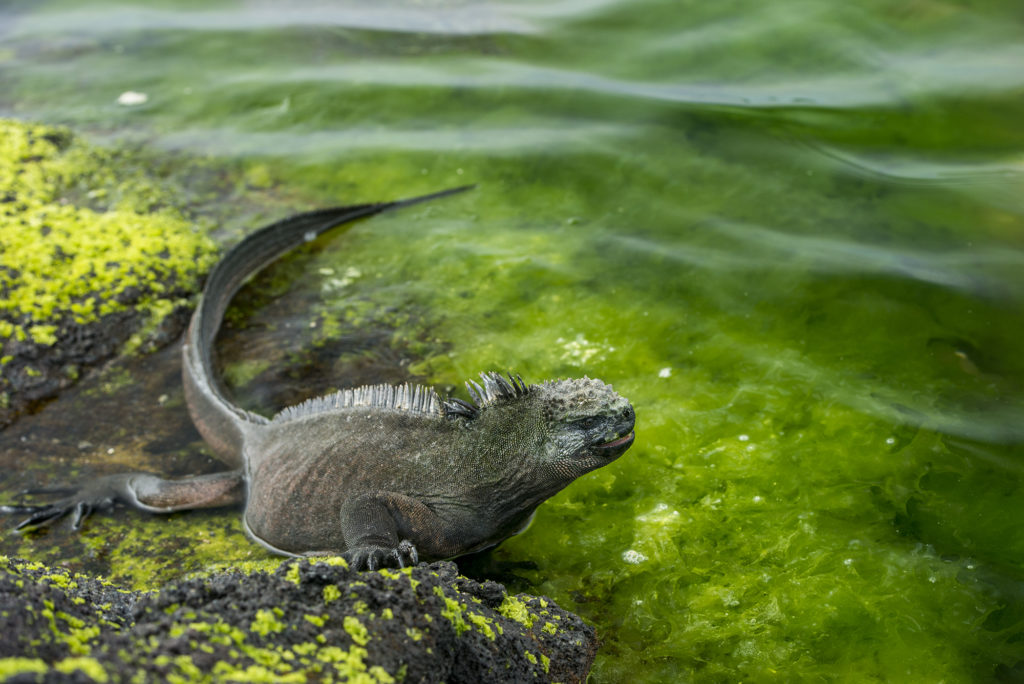
There are more wild tortoises living on Isabella than all the other islands combined, and it is home to the Galapagos Tortoise Research Center. On the west coast of Isabela; the nutrient-rich currents creates a feeding ground for all manner of fish, dolphins, whales, and sea birds. Isabella has 7 pristine diving spots and countless snorkeling opportunities. These nutrient-rich waters have long been known as the best place to see whales in the Galapagos. More than 15 unique species of whales have been seen along the coast, including humpbacks, sperm whales, minkes, and orcas.
Isabella is home to one of the most famous pirate hide-outs in the Galapagos: Tagus Cove. This beautiful saltwater cove offers visitors excellent bird watching for both land and sea birds, and is the best place to try to snorkel with one of the famous Galapagos Penguins.
The Western itinerary ends with a visit to Santa Cruz, giving you the chance to explore the giant tortoise refuge and visit the shops and restaurants in Puerto Ayora, the largest town in the Galapagos Islands.
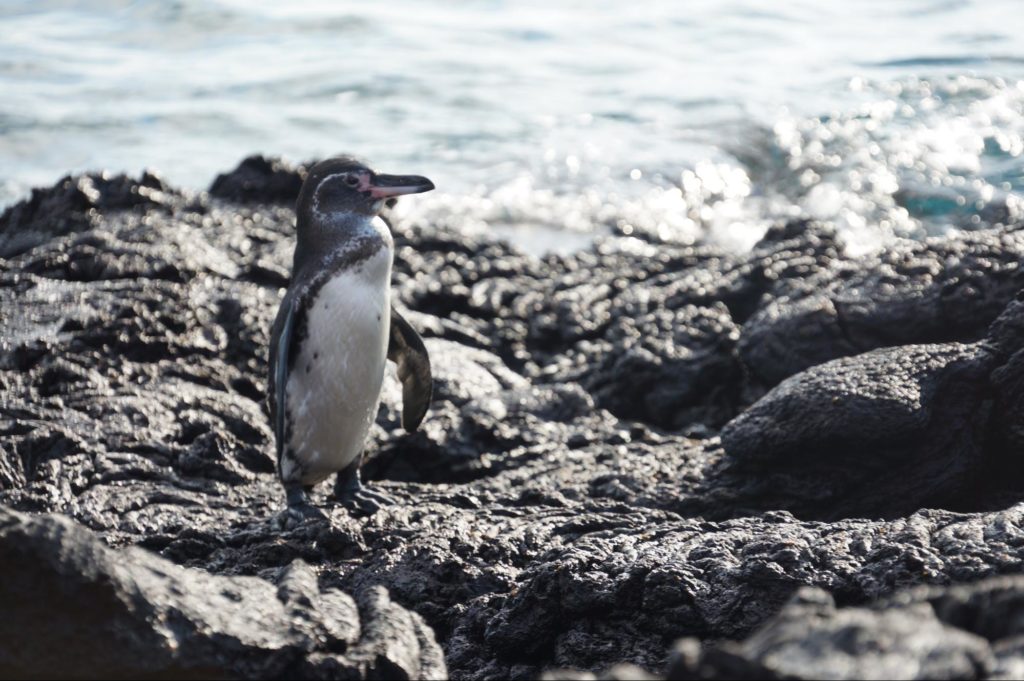
You can find a more detailed summary for each month below, and if you have any questions our Adventure Experts can help (click here to inquire).

















